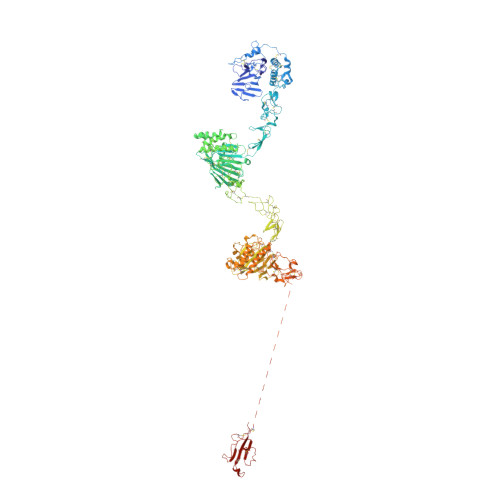Assembly Mechanism of Mucin and von Willebrand Factor Polymers.
Javitt, G., Khmelnitsky, L., Albert, L., Bigman, L.S., Elad, N., Morgenstern, D., Ilani, T., Levy, Y., Diskin, R., Fass, D.(2020) Cell 183: 717
- PubMed: 33031746
- DOI: https://doi.org/10.1016/j.cell.2020.09.021
- Primary Citation of Related Structures:
6TM2, 6TM6, 7A5O - PubMed Abstract:
The respiratory and intestinal tracts are exposed to physical and biological hazards accompanying the intake of air and food. Likewise, the vasculature is threatened by inflammation and trauma. Mucin glycoproteins and the related von Willebrand factor guard the vulnerable cell layers in these diverse systems. Colon mucins additionally house and feed the gut microbiome. Here, we present an integrated structural analysis of the intestinal mucin MUC2. Our findings reveal the shared mechanism by which complex macromolecules responsible for blood clotting, mucociliary clearance, and the intestinal mucosal barrier form protective polymers and hydrogels. Specifically, cryo-electron microscopy and crystal structures show how disulfide-rich bridges and pH-tunable interfaces control successive assembly steps in the endoplasmic reticulum and Golgi apparatus. Remarkably, a densely O-glycosylated mucin domain performs an organizational role in MUC2. The mucin assembly mechanism and its adaptation for hemostasis provide the foundation for rational manipulation of barrier function and coagulation.
Organizational Affiliation:
Department of Structural Biology, Weizmann Institute of Science, Rehovot 7610001, Israel.

















